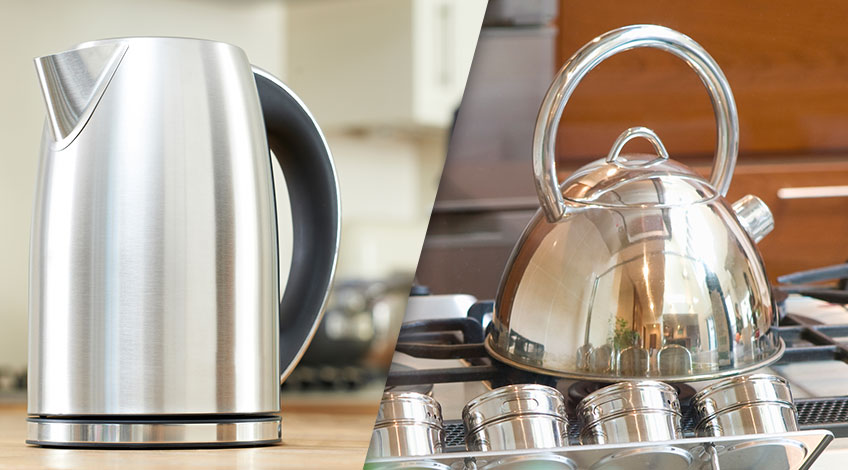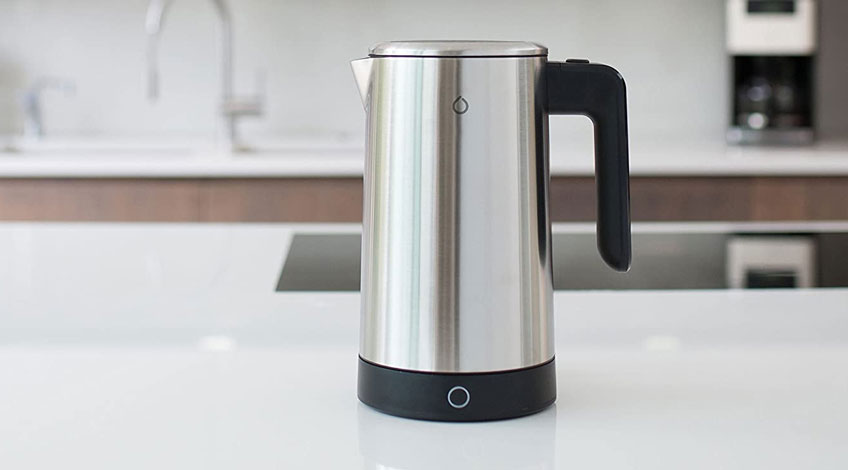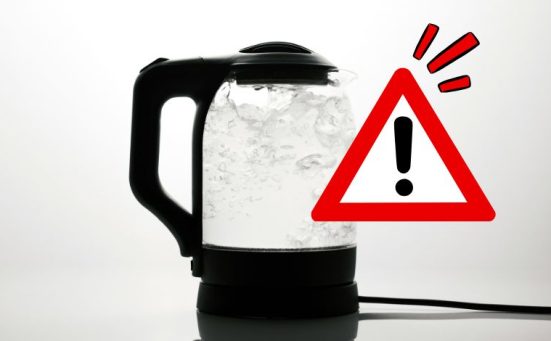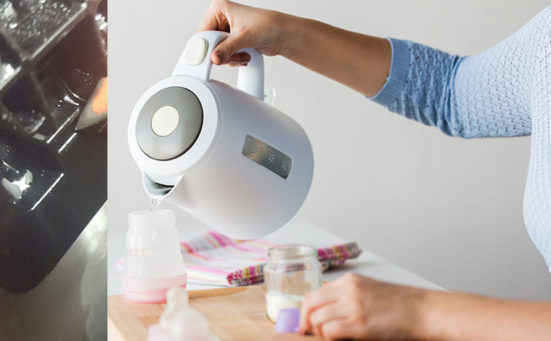
How Much Energy Does A Kettle Use? Kettle Energy Consumption Explained
It’s something we do automatically, put water in the kettle, and turn it on. We all do it so often that it becomes almost invisible to us, we don’t notice what we’re doing. Life is so busy nowadays, whatever we’re doing our minds are on something else.
But if you did actually stop and think about it, you’d realise you’re probably overfilling the kettle every time you use it. “What does it matter?” I hear you ask, well if you were to only boil as much water as you actually need, you could save up to 50% on the electricity used for just making tea.
Please note: if you’re looking for our guide on energy efficient kettles, please click here.
How Much Energy To Boil A Kettle?

All electrical appliances are measured in Watts (W) and an electric kettle averages at around 3000 Watts. Electricity is charged in Kilowatts per hour (Kw/h), to convert watts to kilowatts just divide by 1000. So 3000 watts is the same as 3 kilowatts, this means the electric kettle uses 3 kilowatts of electricity per hour.
But we don’t boil the kettle continuously for an hour, so we need to work it out with more accuracy. Let’s have a look at the energy usage and cost of boiling water in a 3 kW electric kettle.
| 3 kW Kettle capacity in litres | Amount of energy to boil | Cost to boil in pence |
|---|---|---|
| Full kettle (2 litres) | 0.225 kw/h | 4 pence |
| Half-full kettle (1 litre) | 0.113 kw/h | 2 pence |
Just by looking at the chart above, we can see that reducing the amount of water we boil can save a substantial amount of both energy and money. Remember also, 1 litre of water equates to 4 cups or 3 mugs. By pouring the exact amount of water needed for 1 mug could cut these figures by ⅔ and if you use a cup instead of a mug, you could cut the same figures by ¾.
So one cup of water boiled in that same electric kettle will cost ½ penny, and 1 mug would cost ¾ of a penny. Now that doesn’t sound like much, but over the course of a year that’s a substantial saving. Let’s look at annual usage and costs now for the same kettle of water.
| 3 kW Kettle capacity in litres | Yearly energy usage | Yearly average cost in UK £ |
|---|---|---|
| Full kettle (2 litres) | 164 kw/h | £28.93 |
| Half-full kettle (1 litre) | 82 kw/h | £14.46 |
| 1 mug (330 ml) | 54.66 kw/h | £9.66 |
| 1 cup (250 ml) | 41 kw/h | £7.23 |
By just boiling the correct amount of water every time you make a cup of coffee, you could save 75% energy and ¾ of the money or £21.70 per year.
SEE ALSO: Kettle Not Switching Off When Boiled? (here’s why & what to do)
How Much Energy Does A Stovetop Use To Boil A Kettle

If you decided to use a stovetop kettle instead of an electric kettle, what difference would that make to energy usage? According to a recent study, it takes the same amount of energy to heat 1 litre of water whichever method you use. The difference is in the efficiency of the way the heat is used.
| Method of heating 1 litre of water | Energy-efficiency by percentage |
|---|---|
| Induction stove with a kettle | 85% |
| Electric kettle | 80% |
| Gas hob with a kettle | 70% |
| Electric hob with a kettle | 70% |
Both the electric and gas hobs are the least efficient. This is because of heat loss both around the sides of the kettle and the kettle is not switched off immediately after reaching boiling point (100 C – 212 F).
The induction stove is the most energy-efficient at 85% because of the way it conducts heat.
Before induction stoves came along the electric kettle was the most energy-efficient means of heating water.
How Much Does The Water Cost?
Now we are up to speed on energy usage, let’s have a quick look at water consumption and costings. In the UK, water costs vary, but on average, 5 litres of metered water costs just shy of a penny. So 1 litre would cost 0.002 of a penny, 1 mug full would be 0.00066 of a penny and 1 cup would be 0.0005 of a penny.
This doesn’t seem like much, but again, over a year it can soon add up. Especially as we are currently wasting so much water by boiling a full kettle instead of a cupful each time. Presumably, the excess water is thrown away and the kettle refilled for the next cup and so on.
According to a recent survey, 51% of people surveyed drink more than 5 cups of tea per day. So that means that by using the correct amount of water every time you boil the kettle, you could save nearly 274 litres of water per year. Or 55 pence per year, I know that’s not so much, but when added to the £21.70 per year in electricity that’s more than £22 per year. That’s just on cups of tea, think about how much you could be saving elsewhere.
Frequently Asked Questions
The temperature kettles boil at is 100C (212 F).
Electric kettles are faster at boiling water because they heat from the inside so they lose no heat. Whereas stovetop kettles lose heat around the kettle and up the sides.
You can make your kettle more efficient by descaling it. With no scale, the kettle will heat the water faster, using less energy.
An electric kettle does kill bacteria once the water reaches boiling point.
It is not OK to leave water in a kettle because this will increase the limescale build-up.
The electric kettle is more energy-efficient than the stovetop.
Most kettles that have rapid boil and one cup features are considered to be energy efficient. To see our list of best energy efficient kettles, click here.
You should replace your kettle every 2 to 3 years.
A kettle is around 80% efficient.
It costs between 2 to 4 pence to boil a kettle full of water depending on wattage and electricity charges.
Also, follow us on Pinterest ...



